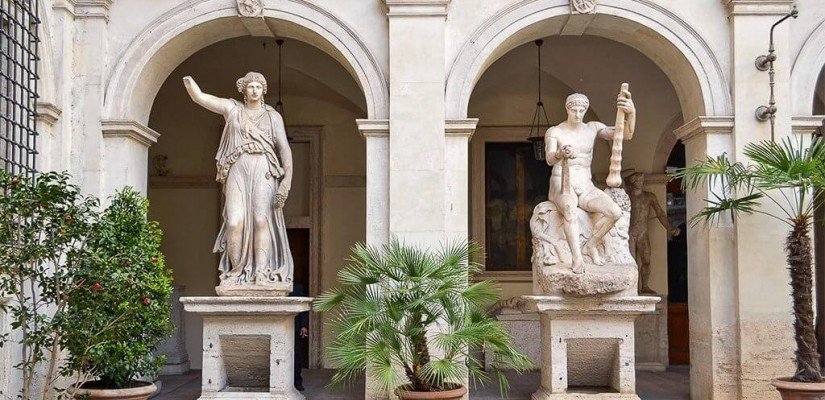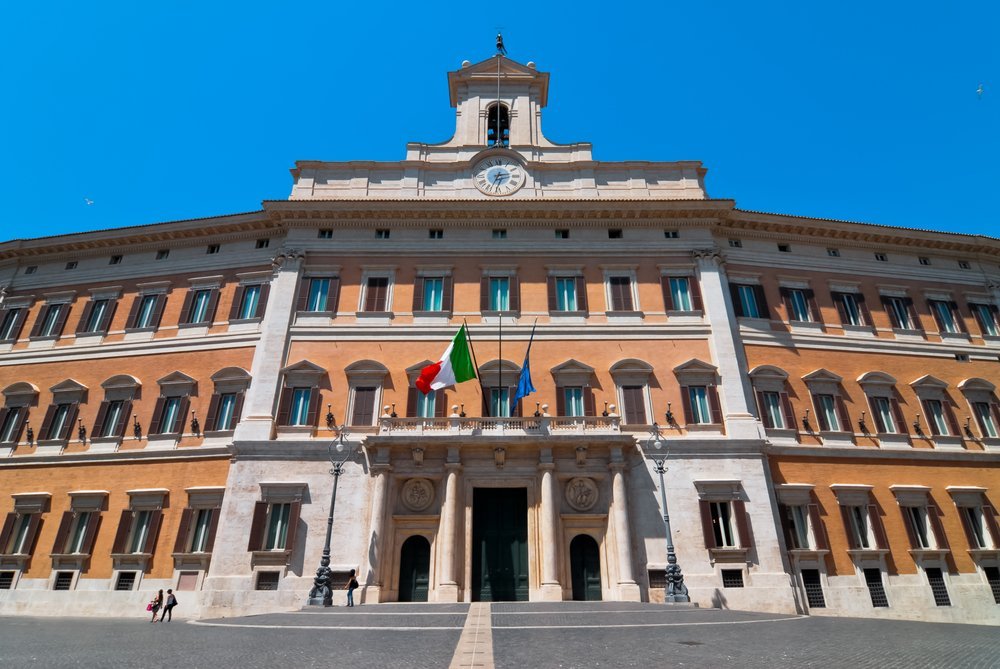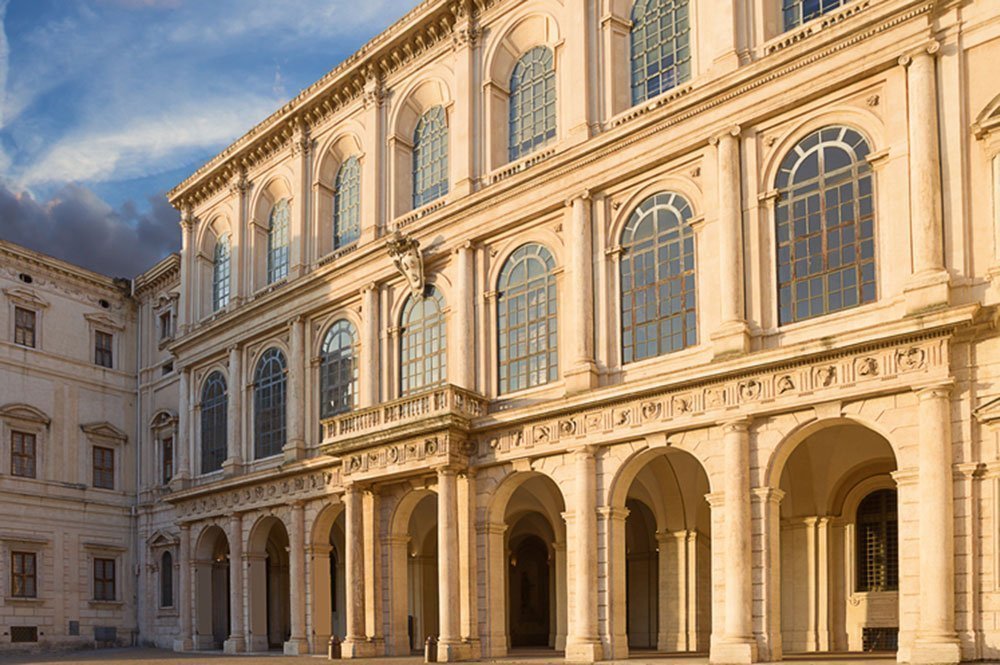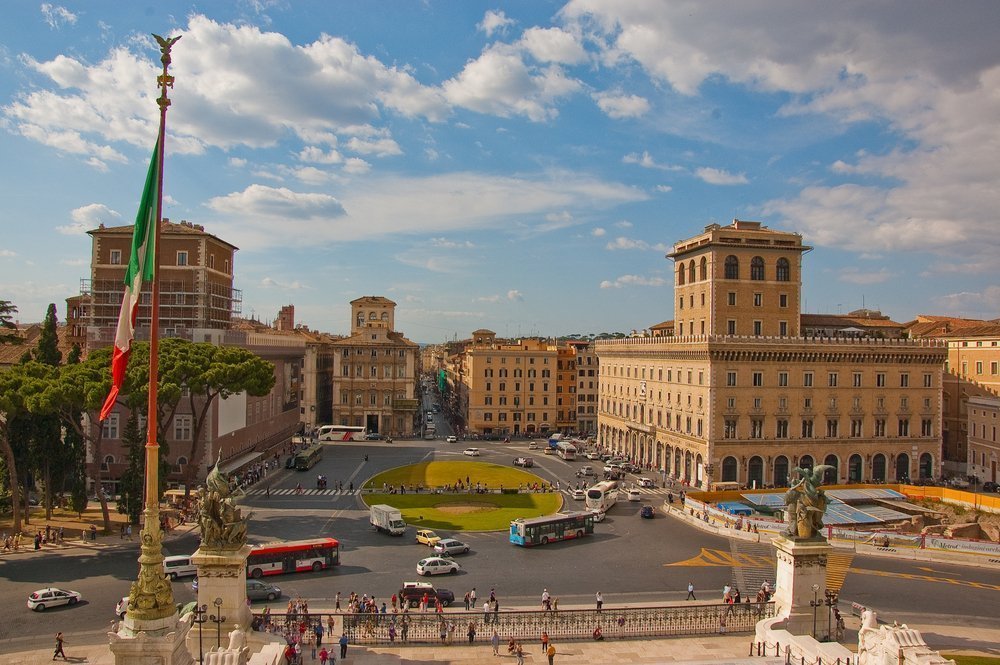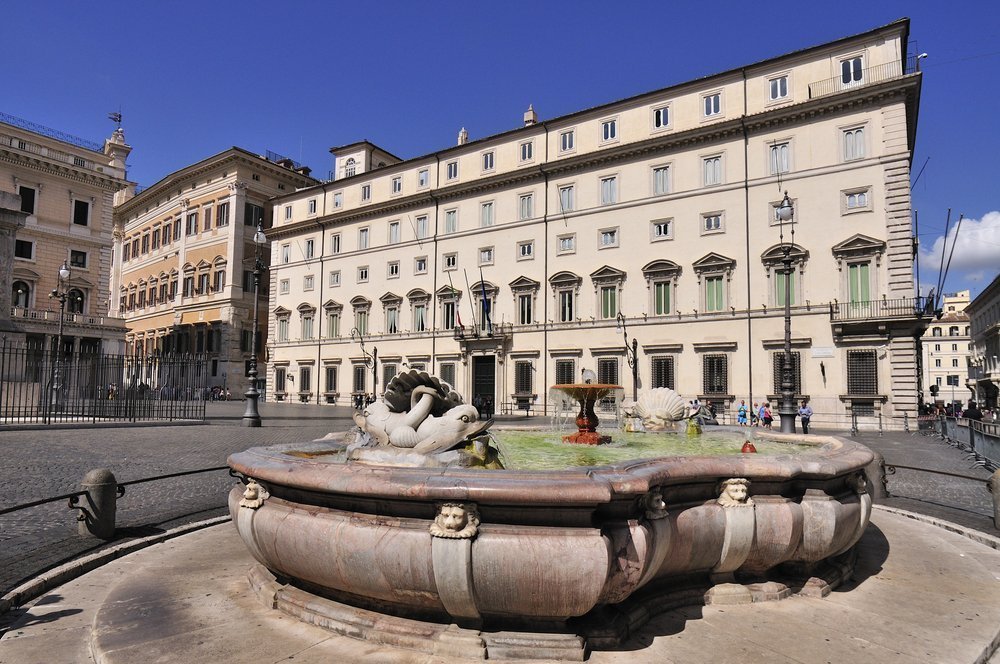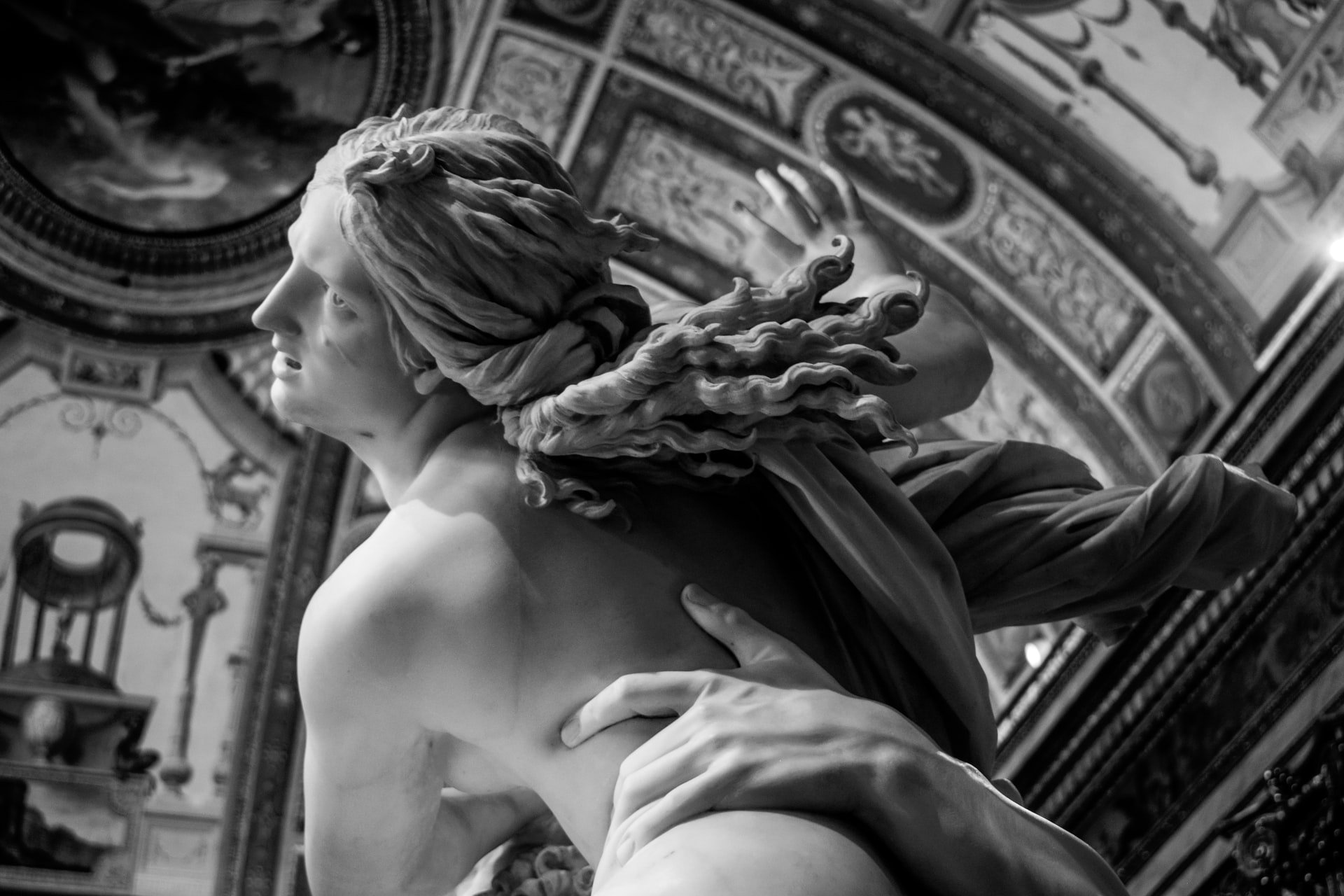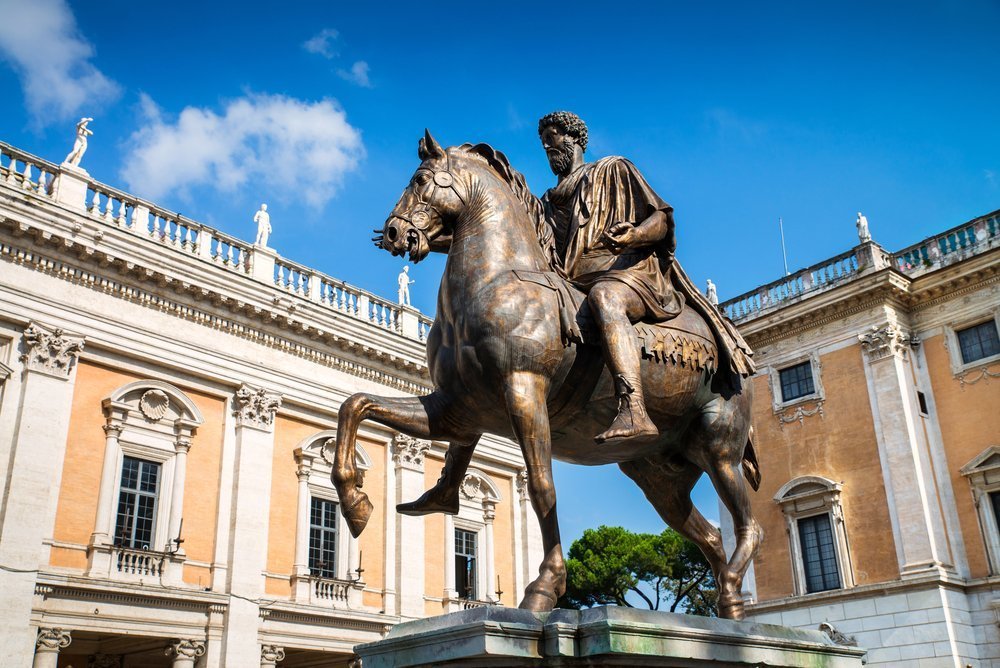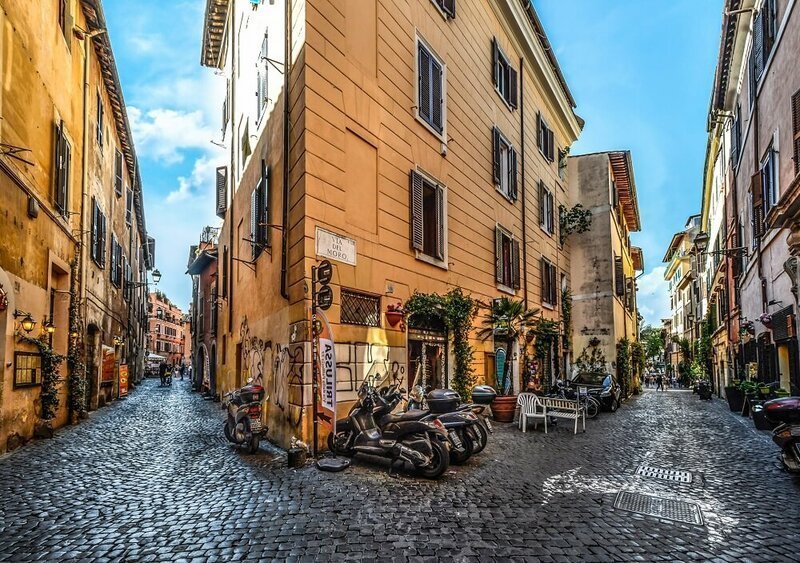Rome is home to a plethora of stunning buildings. Its historical center is a true layer cake of archaeological styles, where ancient temples and apartment buildings shoulder to shoulder alongside renaissance churches and baroque mansions.
Many historical buildings in Rome have all but shed their original functions. From major public offices to state and private museums, educational institutions, and resplendent hotels, they have taken on new leases of life in the ever-changing Eternal City. Come with us through Rome’s historic center as we find out all about the historical buildings in Rome.
Palazzo Chigi
Centrally situated between Via del Corso (once the Via Flaminia, one of the main consular roads of Rome) and Piazza Colonna, Palazzo Chigi is the official residence of the Italian Prime Minister.
Work started on the palace in 1562. Its main architect was Giacomo dell Porta – a little-known name but a man who contributed considerably to the Roman landscape, working on such buildings as Saint Peter’s Basilica, Piazza Navona, and many of the most beautiful fountains of Rome.
Passing briefly to the Aldobrandini family, whose royal lineage lives on both among the Doria Pamphilj and the Borghese family, in 1659 it came under the ownership of the Chigi family.
From a private family residence to an official diplomatic embassy, Palazzo Chigi became the residence of the Austro-Hungarian diplomat to Italy towards the end of the 19th century. Since then it has always retained a political function, being purchased by the Italian State in 1916 and becoming the seat of the Minister for Colonial Affairs.
Palazzo Chigi completed its transformation into the modern day in 1961, when it was designated the official meeting place for the Council of Ministers. Because the head of this council is the Prime Minister of Italy, Palazzo Chigi now serves as his private residence.
Palazzo Barberini
Situated a stone’s throw from the eponymous metro stop, this 17th-century palazzo occupies the former site of a sloping vineyard. This vineyard was the property of the Sforza family, a powerful aristocratic house who ruled the Dukedom of Milan and formed a close alliance with the notorious Borgia family.
When the Sforza family ran into financial problems, they sold the estate to the rival Barberini family. Specifically, it was Cardinal Alessandro Sforza who sold his family property to one Maffeo Barberini, who went on to become Pope Urban VIII.
Three of the 17th century’s great architects worked on the grand design of Palazzo Barberini. One was Carlo Maderno, whose labour was divided between restoring the nave of Saint Peter’s Basilica. Alongside Maderno was his nephew, Francesco Borromini, but when Maderno passed away the commission passed over Borromini directly to his rival – the great Gian Lorenzo Bernini.
Today the palazzo is home to the Galleria Nazionale d’Arte Antica (National Gallery of Ancient Art). It’s not exactly ancient by Roman standards – housing collections by Renaissance and Baroque artists rather than classical Greek and Roman sculptors.
Yet its collection is enviable: Judith Beheading Holofernes by Caravaggio, Hans Holbein’s famous portrait of Henry VIII, and Raphael’s La Fornarina (not as well known as his Raphael Rooms in the Vatican but a masterpiece nonetheless).
Palazzo Venezia
Palazzo Venezia is home to Rome’s National Museum – one of the foremost galleries and museums of Rome. Originally a modest medieval house where cardinals appointed to the church of San Marco used to reside, Palazzo Venezia took on its more resplendent, familiar form in the 15th century when it became a residential papal palace.
In 1564, Pope Pius IV donated most of the building to the Venetian embassy in Rome to win over the powerful Republic of Venice. This was, however, on the condition that cardinals of San Marco could still reside there too.
With the waning of the Venetian Republic and its replacement by Austria, Palazzo Venezia became the seat of the Austrian embassy to the Vatican. Later in its rather more modern history, it became the office of Mussolini, who used Piazza Venezia and Altare della Patria for his speeches and mass rallies.
Visit Piazza Venezia today and you can visit the National Museum’s archaeological and artistic collection, which includes some beautiful terracotta sculptures by Bernini.
Palazzo Colonna
Standing at the foot of the Quirinal Hill, Palazzo Colonna boasts an impressive historical legacy. Built on the site of an ancient Roman serapeum (a temple to the Greco-Egyptian god Serapis), this palace proper first came into form in the 13th century.
Legend has it that Dante, the author of the Inferno and father of the Italian language, stayed here when visiting Rome from Florence. It passed to the Colonna family in the 15th century, and it was only thanks to this and the alliance this family had cultivated with the powerful Hapsburgs, that the palace survived the various feuds and sacking that characterized the 15th and 16th centuries.
Palazzo Colonna has undergone many modifications and restorations over the last few centuries. Most dates from the 17th and 18th centuries, which is somewhat appropriate given that it is now an art gallery and the majority of its sizeable collection dates from this period.

